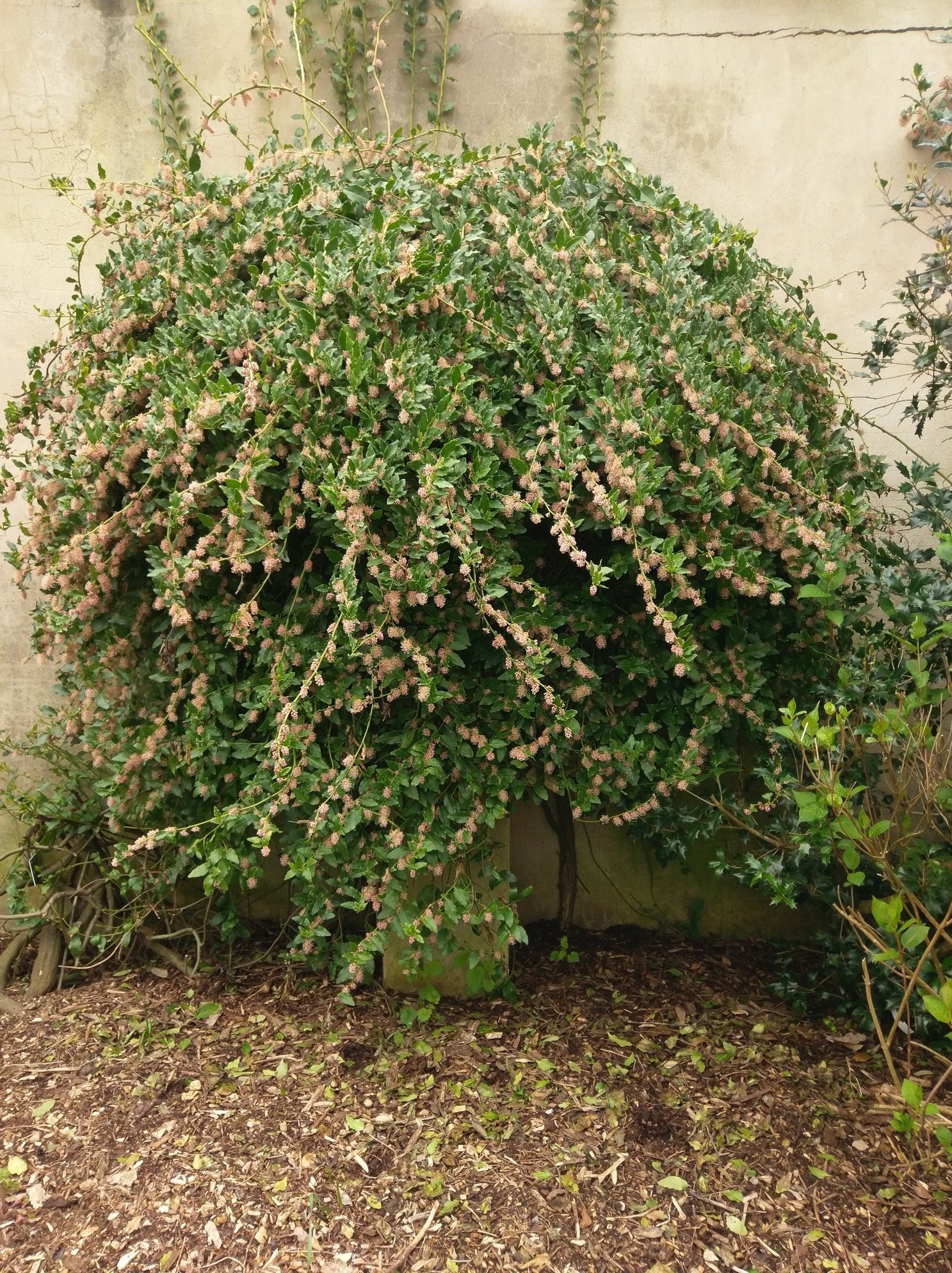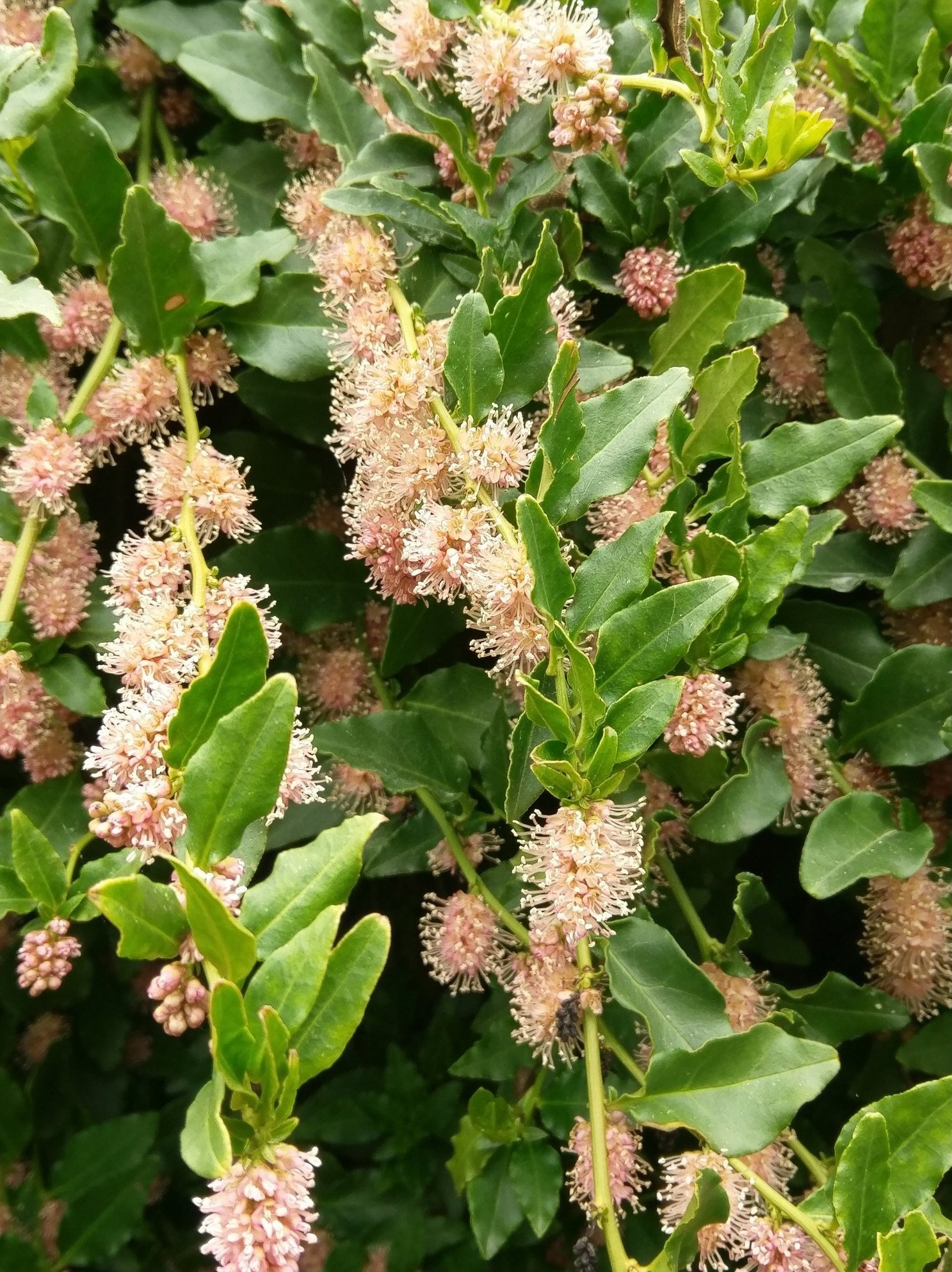Ercilla volubis
In April, when there are so many beautiful blossoms in the Gardens, from the magnolias, cherries, rhododendrons and camellias, one can be forgiven for missing this rather odd, but pretty Chilean vine clambering up the north wall of the Pavilions (area C on the downloadable map). Ercilla volubilis is an evergreen self-clinging climber, supporting itself by aerial roots. The leaves are rounded and leathery, and in March/April the most unusual flowers can be seen in dense spikes of small, purplish white. Brown adhesive pads emanate from behind the leaf axils to hold the stems to the brickwork. In the wild these vigorous shoots would twine through the foliage of shrubs and small trees (volubilis means twining).
Discovered in mixed thickets in the foothills of the Andes, to the coastal forests, it was introduced to the UK in 1840 by Thomas Bridges, a very industrious collector of South American plants. Originally named by Hooker, as Bridgesia spicata, until it was discovered that it had already been named after a Spanish nobleman and soldier, Alonso de Ercilla.
This plant was introduced to the Gardens during the restoration (2004) and has proved to be both hardy and vigorous.


